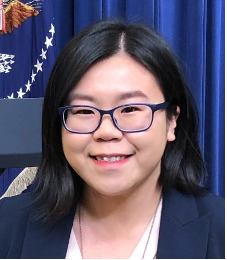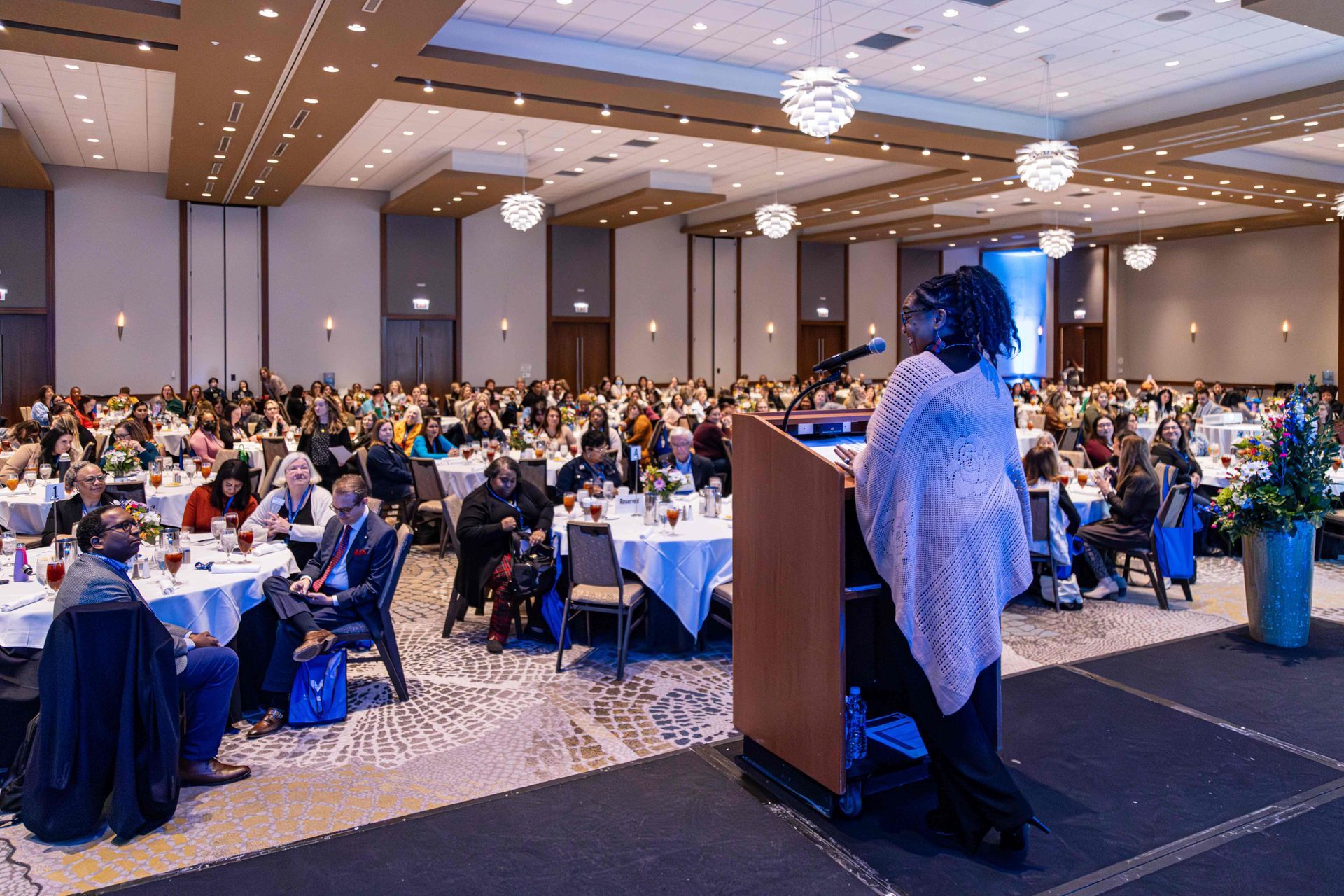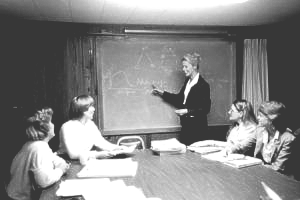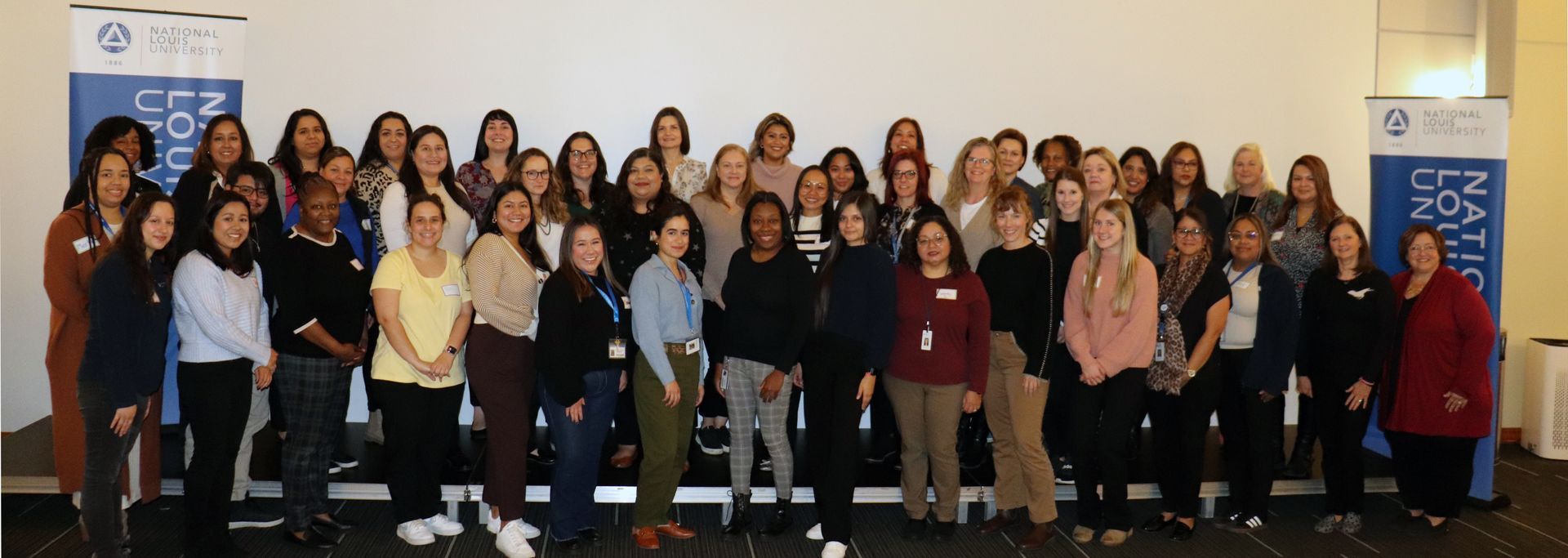BY Khadijah Terrell, with Ja'Re Thorn and Erin Cetera | February 1, 2022
This document may be printed, photocopied, and disseminated freely with attribution. All content is the property of the McCormick Center for Early Childhood Leadership.
The month of February brings back memories from my early youth of celebrating Black History Month. Black History Month had always been the time of year where extra emphasis was placed on commemorating the notable achievements of my predecessors and celebrating the shared Black American experience. I recall this as a time when schools, churches, libraries, civic organizations, families, and individuals – my entire village – would come together to fellowship in Black Pride. In my primary years, most members of my community were Black like me, so learning about the advancements of people of my likeness was frequently integrated into my everyday life. I learned of stories such as school integration and the courage of Ruby Bridges, the patriotism of the Buffalo Soldiers and Tuskegee Airmen, the poetic pens of Countee Cullen and Margaret Burroughs, and the likes of countless other prominent people that looked like me. The representation gave me confidence in knowing that there were endless possibilities of what I could do and who I could be.
As I grew into adolescence and ventured out of that community, I quickly discovered that Black Pride was not universal. A few weeks in February were the only time Black history was acknowledged (and it was often limited to the usual lessons on Dr. Martin Luther King Jr. and the Civil Rights Movement or Harriet Tubman, slavery, and the Underground Railroad). But the fact of the matter is that Black history encompasses far more than just those pivotal events that have been the focus of what is taught from textbooks. Acknowledging the countless contributions of Black men and women should not be limited to the shortest month of the year. The significant influence that Black culture has had throughout our society (and the world) should not be restricted to an abbreviated segment of America’s story. Simply put, Black history IS American history, and there are many benefits to learning the whole story.
Importance of Celebrating Black History
Dr. Carter G. Woodson, known as the “Father of Black History,” created the vision which led to the launch of Negro History Week in 1926. Later, after being officially recognized as Black History Month, its primary focus was to honor and celebrate the achievements of the Black past and bring a call to action for the public to extend their study of Black history. As the founder of the Association for the Study of African American Life and History, Woodson told an audience of Hampton Institute students, “We are going back to that beautiful history, and it’s going to inspire us to greater achievements.”
The importance of honoring and seeking more knowledge about Black history is even more urgent today for the progress of American culture than it was a century ago. Many recent events spotlight the continued racial prejudices and social injustices that plague our nation, which is also evidence that the journey toward tolerance and equality is far from over.
As members of the education field, we often hang our hats on the idea, as quoted by Sir Francis Bacon, that “knowledge is power.” Black History Month is a time to acknowledge the past and preserve the customs and traditions of a group that makes up a significant population of this country. Understanding the rich culture of Black America’s past allows us all to embrace a diversity of traditions as they positively impact the world.
Early exposure imparts respect for the history, culture, and accomplishments that play a significant role in the world in which they live. Teaching Black history in these formative years allows children to grow up with an all-inclusive awareness of their broader community, rather than considering themselves or others as separate entities from the rest of America. Young children are our future, and exposing them to this history is the ideal starting point for changing attitudes and breaking down biases – creating more acceptance for diversity, equity, and inclusion within the world.
When considering how to support children and families as they learn about Black history, ask yourself, “What would best meet the needs of the children, families, and staff that I serve?” and “How can I help our children, families, and staff experience Black history all year long?”
So, what could you do?
- Invite families to share something about their family, culture, or heritage with the children and staff. They could come in and put on a mini show from their culture involving different foods, clothes, and history.
- Partner with agencies that focus specifically on African Americans and have them come in to conduct events or activities with the children and families.
- Librarians can support the curriculum by reading books about African Americans who have made contributions to the world and having the children act out the characters. The children in the classrooms could also create pieces of art based on the stories and what they thought was important or intriguing from the book.
- Create a Black History board in your hallways to showcase different people and their histories for all that walk into your building to see.
- Have children design their own inventions, and have conversations with them about African Americans who have invented items that they often use today.
- Invite prominent African American community members to show children that they can one day achieve the same things.
- Create a Black History program that includes ongoing events. This may allow the children and staff to take on the roles of people who have contributed to history in some way. You could show a Black movie or host activity Fridays where you show a different educational film (at the children’s levels, of course) to support their learning and understanding of Black history.
- Lastly, you could also offer your support for the African American families in your programs by getting their input on what they would like to see for the month and what they could bring to the program.
As you work to develop a plan that ensures your program highlights the importance of Black history throughout the year, know there is no cookie-cutter way to do this, but it can be done. Be creative and explore different ways to involve children, families, and staff in your programming.
Things to Consider When There Are No Black or African American Families in Your Program
The importance of teaching Black history is magnified when there are few or no African American or Black families in your early childhood program. The world is diverse, even if your program’s enrollment is not. Black History Month provides an opportunity for program administrators and staff to refresh their program’s commitment to culturally expansive, anti-bias education. Early childhood education leaders can be one of the most powerful forces for change, and the opportunity should not be taken lightly. We have the power and responsibility to build environments that communicate genuine care, value, and respect for all children and families.
The Head Start Early Childhood Learning and Knowledge Center offers webinars that can support programs as they grow in their understanding of racial and ethnic equity and create teaching and learning environments that support such understanding in children.
Remember that Black history is our history, and without Black history, there is no history because there would be no us!
Below is a list of linked resources and print publications to help with understanding and celebrating Black history within your programs:
- Learn about Influential People and Events:
- Pioneers in Early Childhood Education
- Early Childhood Leaders
- Podcast: In Black America
- Incorporating Black History into Programs and Classrooms:
- Black History Month Preschool Theme
- National Museum of African American History and Culture for Early Childhood Education
- Inspiring Books for the Classroom
- Strategies for Teaching Black History in Early Learning Programs
- Black History Month Activities for Kids
Additional Resources and References:
Fraga, L. M. (2020). Advancing an Equitable and Anti-Racist Child Care System. Exchange, (September/October), 8–9.
Rogers, R. M. (2021). A Story of Reimagining–Creating A Beloved Community. Exchange, (November/December), 16–19.
Sparks, L. D., & Edward, J. O. (2019). Understanding Anti-Bias Education: Bringing the Four Core Goals to Every Facet of Your Curriculum. Young Children, 74(5). https://www.naeyc.org/resources/pubs/yc/nov2019/understanding-anti-bias
The McCormick Center DEI Task Force. (2021, January 28). Supporting Family Child Care Providers and Center Directors Celebrating and Incorporating Black History Month. https://mccormickcenter.nl.edu/library/black_history_month/
Khadijah Terrell is an Assessor and Training Specialist and a member of the McCormick Center for Early Childhood Leadership Diversity, Equity, and Inclusion Task Force. Khadijah holds a Bachelor of Arts in professional communications from Roosevelt University, a Master of Arts in teaching from Chicago State University, and an educational specialist degree in curriculum and instruction from National Louis University. Khadijah has 15 years of experience in the education field, working with children, families, and teachers around the greater Chicagoland area.
Ja’Re Thorn is an Assessor and Training Specialist for the McCormick Center for Early Childhood Leadership at National Louis University. Ja’Re holds a Bachelor of Science degree in child development from Northern Illinois University and a Master of Science in child development from Erikson Institute. She is currently completing a doctoral program in teaching and learning, specializing in curriculum, advocacy, and policy, at National Louis University. Prior to joining the McCormick Center, Ja’Re worked in many roles in early childhood education, ranging from infant teacher to adjunct faculty member. Ja’Re’s hope is that one day all children will receive equity in education, beginning with ensuring that all educators are thoroughly prepared before entering the classroom and receive continued support when in the classroom.
Erin Cetera is an Assessor and Training Specialist and a member of the McCormick Center for Early Childhood Leadership Diversity, Equity, and Inclusion Task Force. Erin holds a Bachelor of Arts in elementary education and human development from National Louis University and a Master of Science in management and organizational behavior from Benedictine University. Erin has 25 years of experience directing early childhood programs in a variety of settings and communities.





